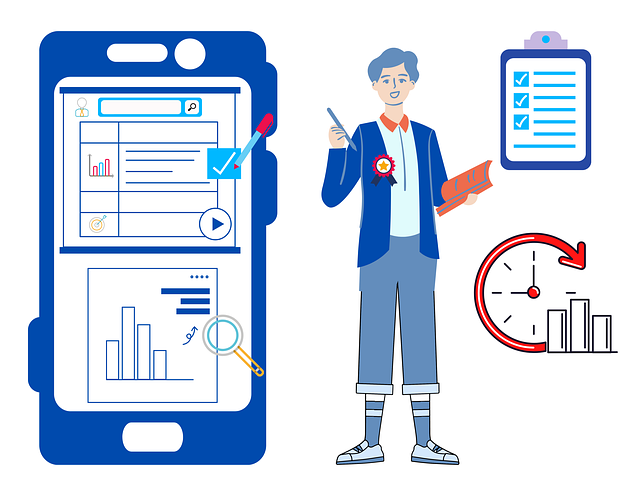In today's digital age, there's a growing demand for personalized and secure dining experiences, especially regarding food allergies. AI seafood freshness monitoring systems are revolutionary tools that use artificial intelligence to analyze ingredient composition, preparation methods, and customer allergies, enabling restaurants to offer diverse seafood dishes safely. These systems predict spoilage, identify potential allergens, and enhance inventory management, minimizing waste and ensuring continuous real-time surveillance. Despite challenges like data privacy concerns and staff training needs, AI seafood freshness monitoring systems promise safer, more efficient restaurant operations.
In the rapidly evolving culinary landscape, ensuring food safety is paramount, especially in the seafood industry. AI seafood freshness monitoring systems offer a revolutionary approach to allergen detection, enhancing diner confidence and restaurant operations. This article delves into the growing need for these advanced tools, exploring how artificial intelligence can transform seafood quality control. We’ll discuss the benefits of integration, addressing challenges while highlighting the potential for improved food safety and customer satisfaction.
- Understanding the Need for AI Seafood Allergen Detectors
- How AI Can Revolutionize Seafood Freshness Monitoring
- Integrating AI into Restaurant Operations: Benefits and Challenges
Understanding the Need for AI Seafood Allergen Detectors

In today’s digital era, the demand for personalized and safe dining experiences has never been higher, especially for individuals with food allergies. Seafood, a beloved culinary delight, often poses significant allergen risks, making it crucial to implement efficient detection methods. Traditional testing techniques for seafood allergens can be time-consuming and may not always guarantee accuracy. Here’s where AI seafood freshness monitoring systems step in as revolutionary game changers.
These advanced tools utilize artificial intelligence algorithms to analyze various factors, including ingredient composition, preparation methods, and customer allergies, enabling restaurants to offer a wide range of seafood dishes with complete transparency. By employing AI, these systems can rapidly identify potential allergens hidden within complex seafood recipes, ensuring that every dish served is safe for consumption.
How AI Can Revolutionize Seafood Freshness Monitoring

AI has the potential to revolutionize seafood freshness monitoring, offering a new level of precision and efficiency in the food industry. By leveraging advanced algorithms and machine learning techniques, AI seafood freshness monitoring systems can analyze various data points such as sensory assessments, physical attributes, and chemical indicators to predict and ensure the quality and safety of seafood. These systems are designed to detect even subtle changes in odor, color, texture, and other critical factors that signify spoilage or contamination.
This technology enables continuous and real-time surveillance, allowing restaurant managers and chefs to make data-driven decisions promptly. With AI, they can predict when seafood might surpass its optimal freshness, optimize inventory management, and minimize food waste. Moreover, AI algorithms can identify patterns and trends, helping businesses stay ahead of potential issues related to storage conditions, supply chain disruptions, or seasonal variations in seafood quality.
Integrating AI into Restaurant Operations: Benefits and Challenges

Integrating artificial intelligence (AI) into restaurant operations offers a myriad of benefits, particularly in the realm of allergen detection and seafood freshness monitoring systems. AI can analyze vast amounts of data to identify patterns related to food safety and quality, enabling restaurants to make data-driven decisions. For instance, AI algorithms can predict seafood spoilage by learning from historical data, helping to ensure only fresh catches are served. This technology also plays a crucial role in identifying potential allergens on menus, as it can rapidly scan ingredients and notify kitchen staff of any risks, thereby enhancing customer safety.
However, implementing AI in restaurants presents challenges. Data privacy is a significant concern, as these systems require access to detailed ingredient lists and customer information. Ensuring secure data handling practices is essential to maintain customer trust. Additionally, training staff to use AI tools effectively takes time and resources, requiring an investment in education and potentially impacting operational costs. Despite these challenges, the advantages of AI seafood freshness monitoring systems and allergen detection tools are compelling, offering a promising path towards safer and more efficient restaurant operations.
AI seafood freshness monitoring systems have the potential to revolutionize the restaurant industry by enhancing allergen detection and ensuring food safety. By leveraging advanced technologies, these tools can identify hidden allergens in seafood, reducing the risk of adverse reactions for customers with allergies or sensitivities. As restaurants integrate AI into their operations, they stand to benefit from improved efficiency, cost savings, and enhanced customer satisfaction, ultimately fostering a safer and more inclusive dining experience.
